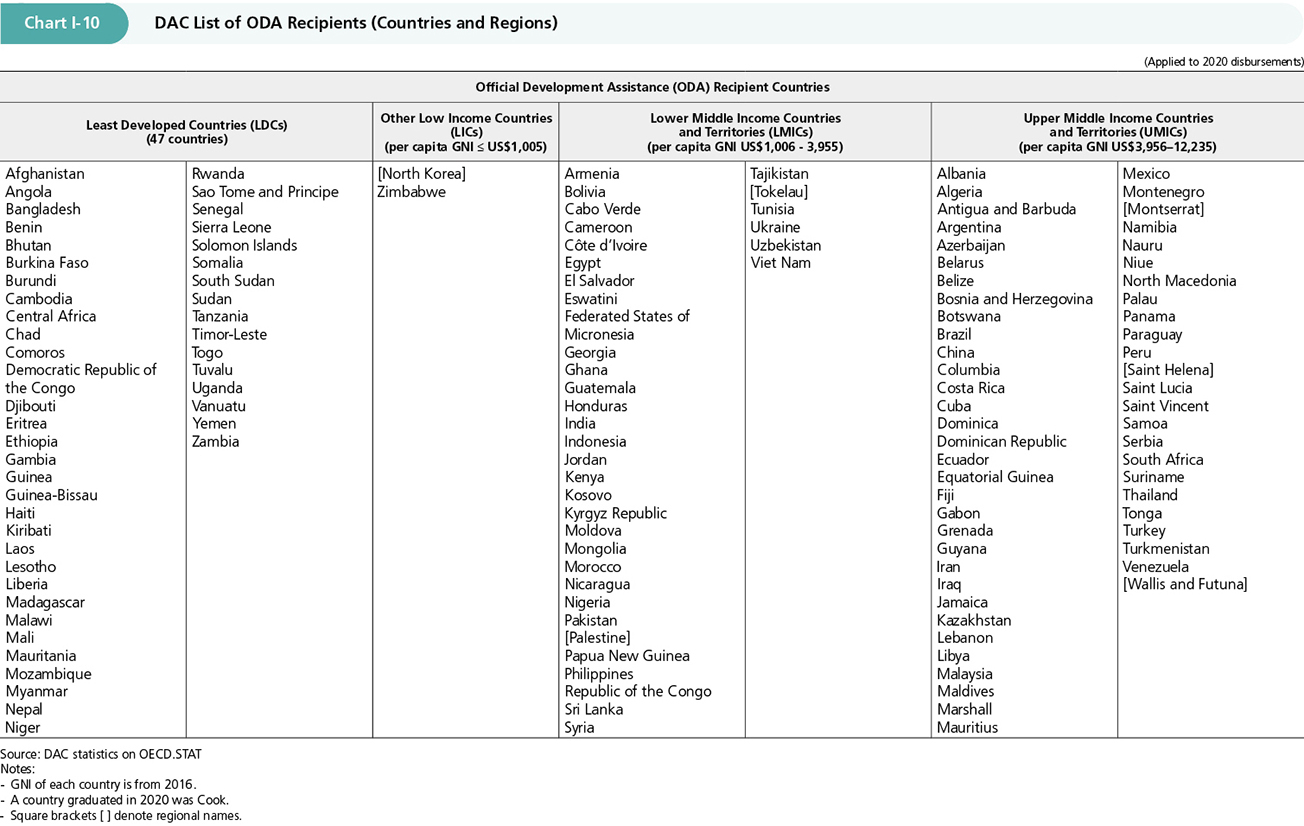(3) Increasing Development Cooperation to Developing Countries by Emerging Donors and the Private-Sector
In addition to the DAC countries, recent years have seen an increase in aid for developing countries provided by non-DAC emerging donors, such as China, India, Indonesia, Saudi Arabia, Brazil, Argentine, Mexico, Turkey, South Africa and private foundations. According to DAC Statistics alone, the total amount of aid provided in 2019 was more than $16 billion by non-DAC countries (only those countries that have reported to the DAC) and more than $45 billion by NGOs.
It is essential to accurately grasp the flow of funds to developing countries and to effectively utilize limited development financing in order for the international community to promote development cooperation in a coordinated manner. However, the statistics prepared and published by the DAC do not reveal the full details of aid for developing countries provided by non-DAC countries and other donors. It has also been pointed out that there are non-transparent and unfair lending practices that do not conform to international rules and standards.
Under these circumstances, discussions were held on the transparency of development finance and other such matters at various international forums in 2021, including the G7, G20, and OECD. For example, at the G20 Foreign and Development Ministers’ Meeting held at the end of June, then Foreign Minister Motegi emphasized that the G20 members should take the lead in complying with international rules regarding development finance, and raised the need to initiate discussions so that as many countries as possible can achieve early participation in the Total Official Support for Sustainable Development (TOSSD), Note 17 a groundbreaking initiative to visualize the full array of resource flows in support of developing countries, including public funds other than ODA.
In addition, the OECD’s 60th Anniversary Vision Statement, a document adopted in October that sets out the OECD’s basic policies for the next 10 years, stated that the OECD would promote adherence to OECD standards and practices to improve transparency and accountability for “all stakeholders.” The communiqué adopted at the Seventh High-Level Meeting of the Governing Board of the OECD Development Centre Note 18 in December also states that the members of the Centre “stress the importance of enhancing debt transparency through stronger public-debt management and integrated debt recording and management systems.”
Japan will continue to work with the international community to ensure that aid for developing countries of emerging donors including China is transparent and consistent with international standards and initiatives. (See “Efforts on Debt Issues” and “Partnership with Other Countries and International Organizations”).

- Note 17: A new statistical system that has been under consideration centered on the DAC since 2017. It aims to track a wide range of official financial flows that contribute to sustainable development. This includes “aid” from emerging donors not reported to the DAC, financial resources that do not necessarily have development as their main objective, and even private finance mobilized by the involvement of official funds, as long as they contribute to sustainable development. Data reporting has begun in 2020.
- Note 18: An organization within the OECD that conducts studies and research on various development issues and economic policies. Its members include not only OECD member countries but also emerging donors and developing countries that are not members of the OECD, such as China.
